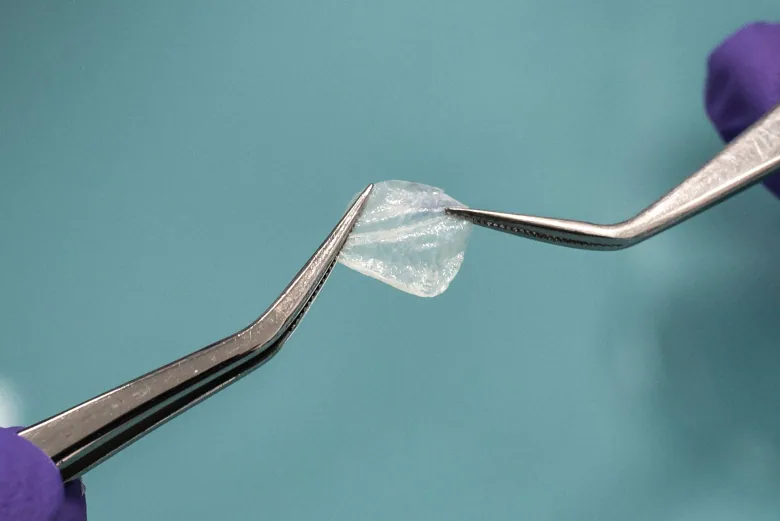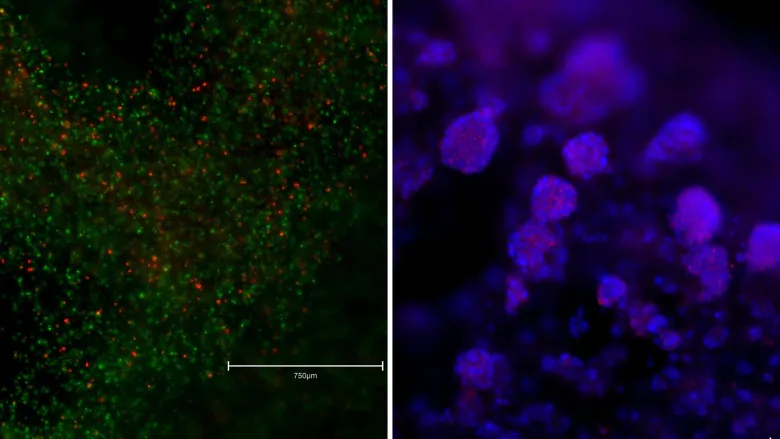Lab animals have been an essential part of life-altering and lifesaving scientific research and discovery. But a growing number of scientists are calling for an end to their use, and pushing for new methods that can better replicate human biology instead.
Among them is biomedical researcher Dr. Charu Chandrasekera. She’s the founder and executive director of the Canadian Centre for Alternatives to Animal Methods at the University of Windsor. Here is part of her conversation with Quirks & Quarks host Bob McDonald.
Animal testing historically has been considered a regrettable necessity in the quest to save human lives. Why do you think this is not the case?
Animals have played an integral role in science over the past century or more, to the point where we have made them the gold standard for human biology. And therein lies the problem.
Over 90 per cent of drugs tested to be safe and effective in animals, fail in human clinical trials. And even the ones that make it through, they can still be withdrawn or receive black box warnings due to unpredicted side effects in humans. And it’s not just the drugs that fail, but the drugs that we missed, like the drugs that never made it to human clinical trials because they had some irrelevant side effects in animals. They could very well been safe in humans. So we’ve likely missed out on many life saving, history altering medications.
When you’re doing these experimental modifications in these animals, you’re really not recreating the human disease. You are creating a version of a human disease. – Dr. Charu Chandrasekera, biomedical researcher
Why would a drug work in an animal but not in a human?
Well, there’s a very simple answer to that. We humans, we are not 70-kilogram versions of mice, rats, guinea pigs, rabbits, cats, dogs, sheep or monkeys. We’re human. We’re separated by hundreds of millions of years of evolution from some of these laboratory animal species.
And it’s not only just the species’ differences, but there are also so many issues with the way we conduct this research. We have to induce disease by either doing surgical modifications, giving them a high-fat diet. So dietary modifications, genetic modifications, take out a gene, put in a gene, or chemically destroy their pancreas, for example, to create diabetic models. So when you’re doing these experimental modifications in these animals, you’re really not recreating the human disease. You are creating a version of a human disease.
What motivated you to go from doing animal research in your lab to trying to end the practice altogether?
It was the scientific failures combined with the ethical standards that I was not happy with. So I worked with animal models of heart failure. And while I was doing all these studies, my dad actually had a heart attack and he required quadruple bypass surgery. And while I was with him at the Halifax Heart Centre, I thought to myself, is the research that I’m doing going to truly help humans like my father and everybody else in this ward?
A few weeks later, when I came back to the lab, I ran into this veteran cardiovascular researcher, and he had worked on receptors similar to the ones that I was working on. And I just looked at him and I said, “Do you think these receptors were activated in my dad’s heart during his heart attack?” And his response was, “How the hell would I know? We’ve never looked at this in the human heart.” And for me, that day, it was a profound realization. It was almost like an epiphany. What am I doing this for?
Those are the reasons why we should end animal research. Let’s explore some of the solutions. What are some of the alternative methods to animals in research that are being developed?
Recreating human biology in a petri dish is no easy feat. There’s no single magical method that can replace all animal testing tomorrow morning. It’s really all about context of use, fit for purpose. What is the biological question you’re trying to answer, and in what context, and how best can we address that?

So we can use human cells and tissues from cadavers and surgical remains. We can take a diseased heart removed during transplant surgery and bring it back to life in the lab, make it beat again, infused with drugs to study cardiac physiology and cardiac toxicity. We can take just a single human cell and obtain hundreds of data points on human DNA and RNA through multiomics studies. We can engineer human tissue, create miniature organ models like organoids to recapitulated complex diseases using stem cell technologies. The field is just exploding.
Can you give me a list of some of the projects that you’re working on at your centre right now?
We currently have liver, gut, kidney, lung and blood brain barrier models in development. And we have a number of projects that incorporate these tissues in different configurations to create disease in a dish, and toxicity on a chip. One of the first disease models we’re creating is diabetes in a dish, and we’re also doing Alzheimer’s in a dish. We actually have a project designed specifically to reduce and replace toxicity testing in dogs. And we even have an eco-toxicology project where we’re using fish lines to replace toxicity testing on live fish.

How can we be sure that these alternatives are as good or even better than actual animal testing?
This is all based on evidence now. So for some of these methods that we have, we are already seeing that they are able to recapitulate these human responses. We can actually look at the data that we get from using these new technologies and compare them against existing data. But we are also seeing things like new data where we’re going back and reevaluating these old drugs that failed in one system and then putting them through a human biology based system. And we’re seeing that they are able to predict human biology better.
How hopeful are you that we can make this shift away from using animals in scientific research?
I’m actually very hopeful that we will be able to shift away from this animal-centred paradigm to one where human biology is the gold standard and humans are the quintessential animal model. There are scientific, innovative financial and legislative efforts happening around the world to make this happen.
The goal really is to reduce as much as possible at this point. And even if we needed to use animals, could they become the last resort that you are only using, you know, five rats, for example, for a procedure that required 400 rats before? So because of all of these efforts happening globally, I’m very hopeful.
Produced by Amanda Buckiewicz. This interview has been edited for length and clarity.
Reference-www.cbc.ca